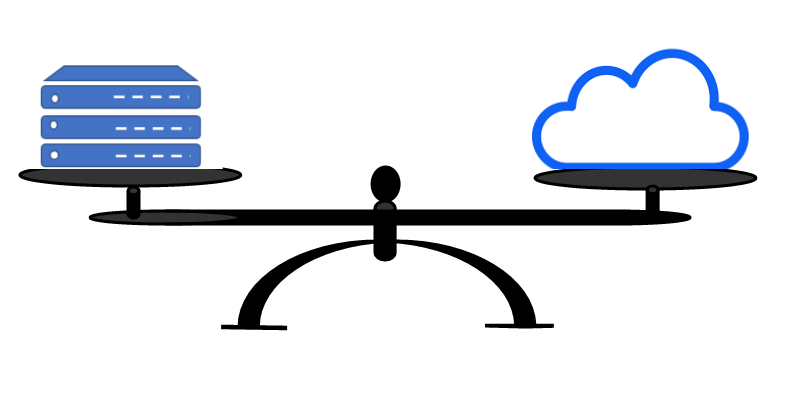No one likes to hear that an investment is aging, reaching end of life, or becoming obsolete and no longer supported. Although it would be nice if we could buy something once and never have to think about it again, the reality is that the laws of the physical universe (inertia!) and the human need to continually improve on inventions make that impossible.
Not only is it impossible, but as we established in part one of this blog…it’s really not desirable. Do you really want to still carry that giant brick of a cell phone you used to have? Or would anyone actually prefer to have slow computers and servers that take up an entire room? Of course not. How about driving to the library to look up information via the Dewey Decimal System instead of just googling your question on your phone? It’s hard to even imagine going back to that.
So when it comes to business and enterprise technology and unified communication systems, progress is positive and can help you to improve on your company’s efficiency and productivity. When facing decisions to upgrade, replace, or change delivery models completely, it’s important to take a moment and look at it both objectively and realistically. In this age of exponential IT growth, there are many companies that will try to sway you based on price alone.
 Buyer beware: When deciding whether to keep your technology hardware, or move to an “as a service” model where you use someone else’s technology, don’t get distracted by sticker price alone. There are more factors and hidden costs to consider than what you see on the contract or quote.
Buyer beware: When deciding whether to keep your technology hardware, or move to an “as a service” model where you use someone else’s technology, don’t get distracted by sticker price alone. There are more factors and hidden costs to consider than what you see on the contract or quote.
Ultimately, the best decision for one company may be completely different than another seemingly similar company. This is because each business has it’s own unique set of circumstances that determine the best choice. Getting an assessment from a trusted technology consultant can drastically reduce the time you have to spend weighing these factors, but there are some main categories you can analyze on your own.
Upfront Cost vs. Ongoing Cost: Don’t be fooled– upfront price is only part of the real cost. For on-premise solutions, the cost doesn’t stop with how much new hardware/software is needed to put a solution into place. And for cloud, similarly, recurring monthly service costs are not the whole picture.
10 Overlooked but Crucial Factors to Consider:
1. Taxes, Fees, Surcharges: Most “as a service” or cloud contracts don’t show these additional and upfront costs. Shipping can represent a considerable implementation cost, and the taxes, fees, and surcharges on your recurring bill can be as much as an additional 11-15%. Be sure to ask for an estimate on these costs if they are not clearly shown as a line item on your quote.
2. Downtime: How much do you stand to lose? It may sound ridiculously obvious, but it is often overlooked. A critical factor to any company is being able to
 actually conduct business. Find out what to realistically expect with outages and downtime for any purchase, and multiply that average by how much it will cost your company to be down for that long. This number is scary, but a true factor whether you are nursing along an older system or signing up for a cloud service.
actually conduct business. Find out what to realistically expect with outages and downtime for any purchase, and multiply that average by how much it will cost your company to be down for that long. This number is scary, but a true factor whether you are nursing along an older system or signing up for a cloud service.
3. Staff/Administration: How often do adjustments need to be made in your organization? Moves, adds, and changes (MACs) for every time an employee is added or deleted, every time a team member forgets their password, each job title change or permission adjustment takes time and ability. A good portion of an IT administrator’s time is spent with these menial tasks. Factor that into your cost comparison, based on your organization’s history and staff size, and consider what you the hourly rate is for the employees that will have to use their time to handle these adjustments. Some service plans include MACs in their support, thus freeing up your staff to focus on their role.
4. Training: End users and administrators: Is training included in the cost of your new or replacement solution? If so, how long will the training take? Add to your cost analysis what it will cost the company to pay the staff while they are being trained– this is a very large hidden expense that companies overlook, especially when opting for a cheaper, but more complicated solution. A good investment will be one that is user-friendly, offers on-demand tutorials and training that will enable your staff to be up and running in the least amount of time. A lesser-quality solution may have a more attractive initial price, but often takes inordinate amounts of time for staff to understand and use it’s features.
5. Maintenance: upgrades, troubleshooting, scheduled backups: Again, do you have the staff to handle this? Find out what is covered in the support or service plan, and weigh that against the cost of hiring outside technical support to handle these necessary tasks. It could be much less costly and time consuming to put a support plan in place where the experts handle this.
6. Warranties/Assurance: Required support coverage to protect in the event of failure. Never assume– this cost may or may not be included in your support or service plan. Be sure to find out! When it comes to business software, hardware, applications and services, it is worth having a replacement plan in place. Don’t think that cloud eliminates this factor– many cloud services require an additional warranty or service plan.
7. Feature Overlap: What are you paying for that you don’t need? This is much more common than you would imagine. Many organizations pay for a solution and don’t realize it’s full capability. Example: paying for a subscription to a web conference solution that may already be included in your phone system feature set. Get a full list of included features, along with possible add-ons, and compare this to other products you are considering or already paying for.
Many business phone systems can eliminate the need for separate instant messaging solutions, web conferencing, video conferencing, mobile phones, document sharing, and more. A more robust system that seems to cost a bit more may actually SAVE you money by replacing the need for other applications.
8. Service Overlap: It is wise to have redundancy and a fail-over plan in place, but only when thoughtfully designed. Many companies have services such as phone lines, extensions, DIDs, or internet services they don’t need. Do a comprehensive audit of all the bills you are receiving from every service provider and eliminate the circuits, lines, or services that are being used. Since every provider has their own nomenclature, though, take advantage of consultants’ free review services to decipher your accounts.
9. Energy: The sneaky snake in the grass. It is estimated that the average server costs $799.70 per year to power a server. You can get a the specs on the hardware you own or are considering and factor that by your location’s energy cost. Does this mean you should ditch the hardware and go with cloud? Not necessarily. By upgrading to the latest, energy efficient model, or virtualizing, you could potentially reduce or nearly eliminate this hidden expense.
10. Bandwidth: How big is your pipe?Just like energy consumption is an overlooked expense for sticking with older hardware or keeping all your applications’ server on premise, cloud migrations can come with a startling dose of reality: you may not have the bandwidth to operate the service you just signed a 3-year contract for.
In metropolitan areas, this can be a simple fix. But smaller towns or rural areas may not have many options, and therefore are not good candidates for cloud. The solution to this then, is to go with an in-house or premise solution. In this model, your only limitations are your internal network’s infrastructure. While cloud providers are improving how they leverage bandwidth these days, there is still no getting away from the fact that moving your heavy workloads to the cloud will demand better bandwidth.
If you’re contemplating any kind of major cloud move, speak with a trusted consultant on what kind of bandwidth you should have in place to have a good experience for internal operations and external customer satisfaction.
The moral of the story? Remember that there are more costs involved in any technology or phone system price, and those costs will vary depending on your unique business. Take your time to consider all the factors above, and call in the experts to help and save you time…it will end up saving you money!
{{cta(‘7a915644-8003-4f7f-b699-db7a1aac0319′,’justifycenter’)}}
{{cta(‘6ee04491-a39b-49e6-8937-93f4248e19ad’)}} {{cta(‘f43c55c7-8244-48c2-9a72-6b2a6e607ed7’)}}






